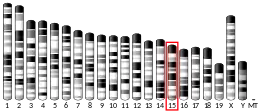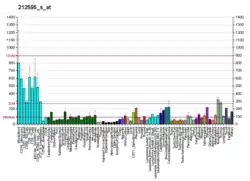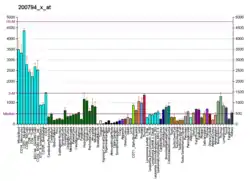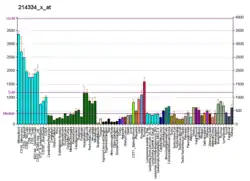| DAZAP2 | |||||||||||||||||||||||||||||||||||||||||||||||||||
|---|---|---|---|---|---|---|---|---|---|---|---|---|---|---|---|---|---|---|---|---|---|---|---|---|---|---|---|---|---|---|---|---|---|---|---|---|---|---|---|---|---|---|---|---|---|---|---|---|---|---|---|
| Identifiers | |||||||||||||||||||||||||||||||||||||||||||||||||||
| Aliases | DAZAP2, PRTB, DAZ associated protein 2 | ||||||||||||||||||||||||||||||||||||||||||||||||||
| External IDs | OMIM: 607431 MGI: 1344344 HomoloGene: 8038 GeneCards: DAZAP2 | ||||||||||||||||||||||||||||||||||||||||||||||||||
| |||||||||||||||||||||||||||||||||||||||||||||||||||
| |||||||||||||||||||||||||||||||||||||||||||||||||||
| |||||||||||||||||||||||||||||||||||||||||||||||||||
| |||||||||||||||||||||||||||||||||||||||||||||||||||
| |||||||||||||||||||||||||||||||||||||||||||||||||||
| Wikidata | |||||||||||||||||||||||||||||||||||||||||||||||||||
| |||||||||||||||||||||||||||||||||||||||||||||||||||
DAZ-associated protein 2 is a protein that in humans is encoded by the DAZAP2 gene.[5][6][7]
Function
In mammals, the Y chromosome directs the development of the testes and plays an important role in spermatogenesis. A high percentage of infertile men have deletions that map to regions of the Y chromosome. The DAZ (deleted in azoospermia) gene cluster maps to the AZFc region and is deleted in many azoospermic and severely oligospermic men. It is thought that the Y chromosomal DAZ gene cluster arose from the transposition, amplification, and pruning of the ancestral autosomal gene DAZL. This gene encodes a RNA-binding protein with two RNP motifs that was originally identified by its interaction with the infertility factors DAZ and DAZL.[7]
Interactions
References
- 1 2 3 GRCh38: Ensembl release 89: ENSG00000183283 - Ensembl, May 2017
- 1 2 3 GRCm38: Ensembl release 89: ENSMUSG00000000346 - Ensembl, May 2017
- ↑ "Human PubMed Reference:". National Center for Biotechnology Information, U.S. National Library of Medicine.
- ↑ "Mouse PubMed Reference:". National Center for Biotechnology Information, U.S. National Library of Medicine.
- ↑ Tsui S, Dai T, Roettger S, Schempp W, Salido EC, Yen PH (Aug 2000). "Identification of two novel proteins that interact with germ-cell-specific RNA-binding proteins DAZ and DAZL1". Genomics. 65 (3): 266–73. doi:10.1006/geno.2000.6169. PMID 10857750.
- ↑ Nomura N, Nagase T, Miyajima N, Sazuka T, Tanaka A, Sato S, Seki N, Kawarabayasi Y, Ishikawa K, Tabata S (1994). "Prediction of the coding sequences of unidentified human genes. II. The coding sequences of 40 new genes (KIAA0041-KIAA0080) deduced by analysis of cDNA clones from human cell line KG-1". DNA Res. 1 (5): 223–9. doi:10.1093/dnares/1.5.223. PMID 7584044.
- 1 2 "Entrez Gene: DAZAP2 DAZ associated protein 2".
- ↑ Tsui S, Dai T, Roettger S, Schempp W, Salido EC, Yen PH (May 2000). "Identification of two novel proteins that interact with germ-cell-specific RNA-binding proteins DAZ and DAZL1". Genomics. 65 (3): 266–73. doi:10.1006/geno.2000.6169. PMID 10857750.
Further reading
- Hamilton MH, Tcherepanova I, Huibregtse JM, McDonnell DP (2001). "Nuclear import/export of hRPF1/Nedd4 regulates the ubiquitin-dependent degradation of its nuclear substrates". J. Biol. Chem. 276 (28): 26324–31. doi:10.1074/jbc.M101205200. PMID 11342538.
- Cohen-Barak O, Yi Z, Hagiwara N, Monzen K, Komuro I, Brilliant MH (2003). "Sox6 regulation of cardiac myocyte development". Nucleic Acids Res. 31 (20): 5941–8. doi:10.1093/nar/gkg807. PMC 219484. PMID 14530442.
- Colland F, Jacq X, Trouplin V, Mougin C, Groizeleau C, Hamburger A, Meil A, Wojcik J, Legrain P, Gauthier JM (2004). "Functional proteomics mapping of a human signaling pathway". Genome Res. 14 (7): 1324–32. doi:10.1101/gr.2334104. PMC 442148. PMID 15231748.
- Shi Y, Luo S, Peng J, Huang C, Tan D, Hu W (2004). "The structure, expression and function prediction of DAZAP2, a down-regulated gene in multiple myeloma". Genomics Proteomics Bioinformatics. 2 (1): 47–54. doi:10.1016/s1672-0229(04)02007-8. PMC 5172432. PMID 15629043.
- Rual JF, Venkatesan K, Hao T, Hirozane-Kishikawa T, Dricot A, Li N, Berriz GF, Gibbons FD, Dreze M, Ayivi-Guedehoussou N, Klitgord N, Simon C, Boxem M, Milstein S, Rosenberg J, Goldberg DS, Zhang LV, Wong SL, Franklin G, Li S, Albala JS, Lim J, Fraughton C, Llamosas E, Cevik S, Bex C, Lamesch P, Sikorski RS, Vandenhaute J, Zoghbi HY, Smolyar A, Bosak S, Sequerra R, Doucette-Stamm L, Cusick ME, Hill DE, Roth FP, Vidal M (2005). "Towards a proteome-scale map of the human protein-protein interaction network". Nature. 437 (7062): 1173–8. Bibcode:2005Natur.437.1173R. doi:10.1038/nature04209. PMID 16189514. S2CID 4427026.
- Lim J, Hao T, Shaw C, Patel AJ, Szabó G, Rual JF, Fisk CJ, Li N, Smolyar A, Hill DE, Barabási AL, Vidal M, Zoghbi HY (2006). "A protein-protein interaction network for human inherited ataxias and disorders of Purkinje cell degeneration". Cell. 125 (4): 801–14. doi:10.1016/j.cell.2006.03.032. PMID 16713569. S2CID 13709685.
- Shi YW, Shen R, Ren W, Tang LJ, Tan DR, Hu WX (2007). "Molecular features and expression of DAZAP2 in human multiple myeloma". Chin. Med. J. 120 (19): 1659–65. doi:10.1097/00029330-200710010-00003. PMID 17935665.
This article is issued from Wikipedia. The text is licensed under Creative Commons - Attribution - Sharealike. Additional terms may apply for the media files.






